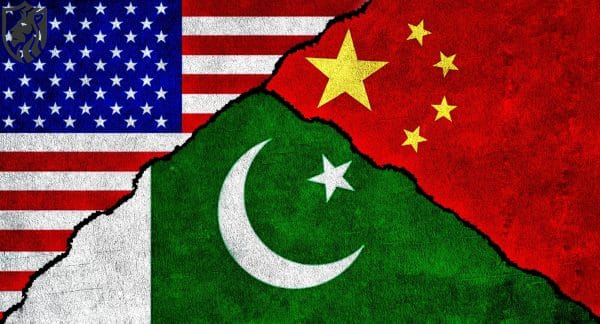
How the U.S. Lost Pakistan to China
Pakistan Embraces Z-10ME in Strategic Shift
The Pakistan Army’s recent induction of the Z-10ME attack helicopter demonstrates an important change in its defence procurement strategy. More than a high-profile acquisition, it underscores a turning point where Pakistan decisively pivoted away from the West. The shift highlights how American defence policies misjudged regional urgency and China’s rising capabilities.
End of the American Gatekeeper Era
For decades, the United States controlled access to high-end military technology in South Asia. This control gave Washington strategic leverage over Pakistan, often tied to complex political conditions and strict end-user monitoring. However, the delivery of the Z-10ME to Pakistan represents a strategic rupture. China has not only established itself as a reliable alternative, but it is also providing superior systems without any restrictions.

Z-10ME: A Doctrinal Upgrade, Not Just a Replacement
Unlike the older AH-1 Cobras based on Vietnam-era designs, the Z-10ME provides the Pakistan Army Aviation Corps (PAA) with a modern stand-off strike capability. This upgrade is transformative. The Z-10ME can be equipped with optional mast-mounted millimetre wave radar and stand-off weapons (SOWs) like the CM-502KG and CM-501X, offering ranges between 25 and 70 km. Even the AH-1Z Viper from the U.S. could not match this package in terms of local adaptability and delivery assurance.
China Tailors Platforms for Pakistan’s Needs
The specific Z-10ME variant delivered to Pakistan is possibly the most advanced version yet. It reportedly exceeds even the helicopters fielded by the People’s Liberation Army (PLA). This version includes updated engines, ceramic composite armour, and advanced sand filtration for desert operations. Additionally, it comes with a complete Defensive Aids Suite (DAS) that has systems to detect radar and laser threats, warn about incoming missiles, counter infrared attacks, and provide electronic defences against a wide range modernised
Strategic Missteps by the United States
The road to Pakistan’s adoption of Chinese attack helicopters started with U.S. miscalculations. Initially, Islamabad sought to modernise, with 12 AH-1Z Vipers and 30 TAI T129B ATAKs from Turkey. But Washington’s political restrictions caused this plan to fall apart.
Underestimating China’s Defence Leap
The U.S. believed China was at least a decade away from producing platforms rivalling top-tier Western systems. This view ignored Beijing’s rapid progress and underestimated its capacity to produce customised, combat-ready equipment.

Overestimating Pakistani Patience
While the U.S. delayed financial support and insisted Pakistan self-fund acquisitions, the ageing Cobra fleet continued to deteriorate. Pakistan’s military viewed this issue as urgent, not optional. The historical memory of Pressler Amendment sanctions – particularly the undelivered 28 F-16s in the early 1990s – still resonates in Rawalpindi. The U.S. compounded that distrust by offering compensation in soybean shipments instead of refunding Pakistan’s financial outlay.
The Collapse of U.S.-Backed Alternatives
In 2016, Pakistan had considered self-funding a deal for F-16 Block 52s, but it was cancelled over similar concerns. Then, the Trump administration froze Foreign Military Financing (FMF) and Coalition Support Funds (CSF) tied to the AH-1Z Viper deal. When asked to proceed without funding guarantees, Pakistan withdrew. A final blow came when the U.S. blocked Turkey from re-exporting the American LHTEC T800 engines used in the T129 ATAK.
Islamabad received a clear message from these decisions: relying on even NATO partners could risk U.S. political interference. This realisation solidified Pakistan’s trust in China as a stable, sovereign supplier.
Rising Chinese Influence and Strategic Ambiguity
Pakistan’s defence market shift presents a new complication for the West. Previously, the U.S. had profound insight into Pakistan’s frontline assets. American systems like the F-16 allowed for performance data sharing, operational doctrines, and close-range intelligence gathering. That transparency is gone.
With Chinese-origin platforms like the J-10CE, PL-15E, and now the Z-10ME, Washington is largely blind to their actual capabilities. This strategic opacity complicates threat assessments and reduces U.S. influence during regional crises.

Future Trends: J-35AE and Beyond
Pakistan’s potential interest in the Chinese J-35AE fifth-generation fighter hints at a deeper alignment with Beijing. With no U.S. counterpart at the table due to political mistrust and policy differences, Islamabad has fewer reasons to engage with American defence firms. Meanwhile, China continues to offer cutting-edge, export-ready systems on terms more aligned with Pakistan’s operational needs and strategic autonomy.
Conclusion: The West’s Lost Leverage
In short, Pakistan’s adoption of the Z-10ME helicopter represents more than an arms deal. It reflects the erosion of American leverage built over decades. Strategic missteps, historical grievances, and a failure to anticipate China’s rapid ascent in the arms sector all contributed to this moment.
The U.S. may retain broader geopolitical influence, but it has lost a vital channel of operational control over Pakistan’s military decisions. This new dynamic is here to stay, and with each induction of Chinese hardware, Islamabad moves deeper into a defense ecosystem beyond Washington’s reach.







